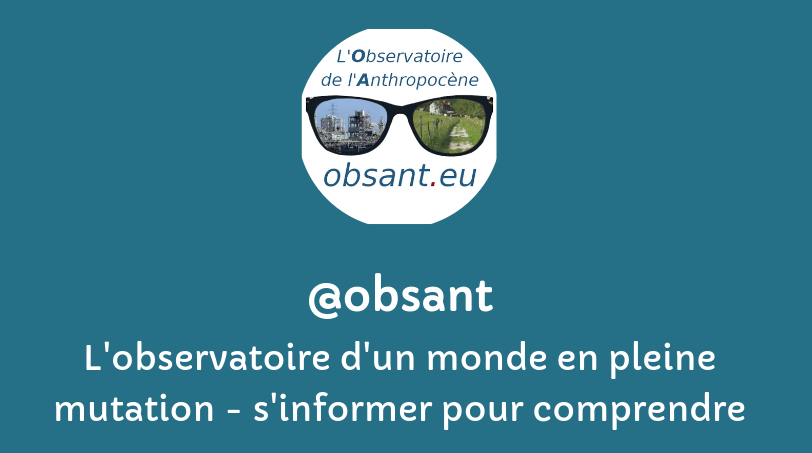« L’urgence est là, nous regardons ailleurs »
filtre:
research
2025
This article examines the technocentric bias that characterizes climate mitigation literature, focusing on the reports of the IPCC's Working Group III. This bias stems from structural features of the scientific field that prioritizes innovation, leading to the overrepresentation of technological solutions in climate research. Funding mechanisms further reinforce this tendency by incentivizing collaboration with industrial R&D, creating a self-reinforcing loop in which scientific authority and industrial interests converge. The IPCC's institutional positioning—as a policy-relevant yet politically cautious body—amplifies this dynamic by favoring allegedly “cost-effective” technological pathways that lack practical feasibility.
The White House has instructed NASA employees to terminate two major, climate change-focused satellite missions. As NPR reports, Trump officials reached out to the space agency to draw up plans for terminating the two missions, called the Orbiting Carbon Observatories. They've been collecting widely-used data, providing both oil and gas companies and farmers with detailed information about the distribution of carbon dioxide and how it can affect crop health.
In an analysis of the best available Earth systems models, Northeastern researchers found that by the turn of the next century, 850 million people will feel the effects of declining runoff from the world's major rivers.
The Environmental Protection Agency said on Friday that it would eliminate its scientific research arm and begin firing hundreds of chemists, biologists, toxicologists and other scientists, after denying for months that it intended to do so. The move underscores how the Trump administration is forging ahead with efforts to slash the federal work force and dismantle federal agencies after the Supreme Court allowed these plans to proceed while legal challenges unfold. Government scientists have been particular targets of the administration’s large-scale layoffs.
Research in Chile suggests climate crisis makes eruptions more likely and explosive, and warns of Antarctica risk
Recent simulations using the Community Earth System Model (CESM) indicate that a tipping event of the Atlantic Meridional Overturning Circulation (AMOC) would cause Europe to cool by several degrees. This AMOC tipping event was found under constant pre-industrial greenhouse gas forcing, while global warming likely limits this AMOC-induced cooling response. Here, we quantify the European temperature responses under different AMOC regimes and climate change scenarios. A strongly reduced AMOC state and intermediate global warming (C, Representative Concentration Pathway 4.5) has a profound cooling effect on Northwestern Europe with more intense cold extremes. The largest temperature responses are found during the winter months and these responses are strongly influenced by the North Atlantic sea-ice extent. Enhanced North Atlantic storm track activity under an AMOC collapse results in substantially larger day-to-day temperature fluctuations. We conclude that the (far) future European temperatures are dependent o
I’m used to environmentalists and futurists writing about The Limits to Growth. I’m less used to seeing investment writers mention research that’s linked to The Limits of Growth. But that’s what Joachim Klement did in his daily newsletter recently. Of course, anyone who writes about Limits of Growth has to do all the usual disclaimers first. This is because the combination of the words “limits” and “growth” in the title produced a lot of critical responses, on a range from straight-up hatchet jobs which misrepresented the book, to people who didn’t appear to understand the systems dynamics model that sat behind it.
2023 set a number of alarming new records. The global mean temperature also rose to nearly 1.5 degrees Celsius above the preindustrial level, another record.A team led by the Alfred Wegener Institute puts forward a possible explanation for the rise in global mean temperature: our planet has become less reflective because certain types of clouds have declined. The work is published in the journal Science.
Microplastics have been found for the first time in human ovary follicular fluid, raising a new round of questions about the ubiquitous and toxic substances’ potential impact on women’s fertility. The new peer-reviewed research published in Ecotoxicology and Environmental Safety checked for microplastics in the follicular fluid of 18 women undergoing assisted reproductive treatment at a fertility clinic in Salerno, Italy, and detected them in 14.
Recent projections suggest that large geographical areas will soon experience heat and humidity exceeding limits for human thermoregulation. The survivability limits modeled in that research were based on laboratory studies suggesting that humans cannot effectively thermoregulate in wet bulb temperatures (Twb) above 26 to 31 °C, values considerably lower than the widely publicized theoretical threshold of 35 °C. The newly proposed empirical limits were derived from the Twb corresponding to the core temperature inflection point in participants exposed to stepped increases in air temperature or relative humidity in a climate-controlled chamber. Despite the increasing use of these thermal-step protocols, their validity has not been established. We used a humidity-step protocol to estimate the Twb threshold for core temperature inflection in 12 volunteers.




